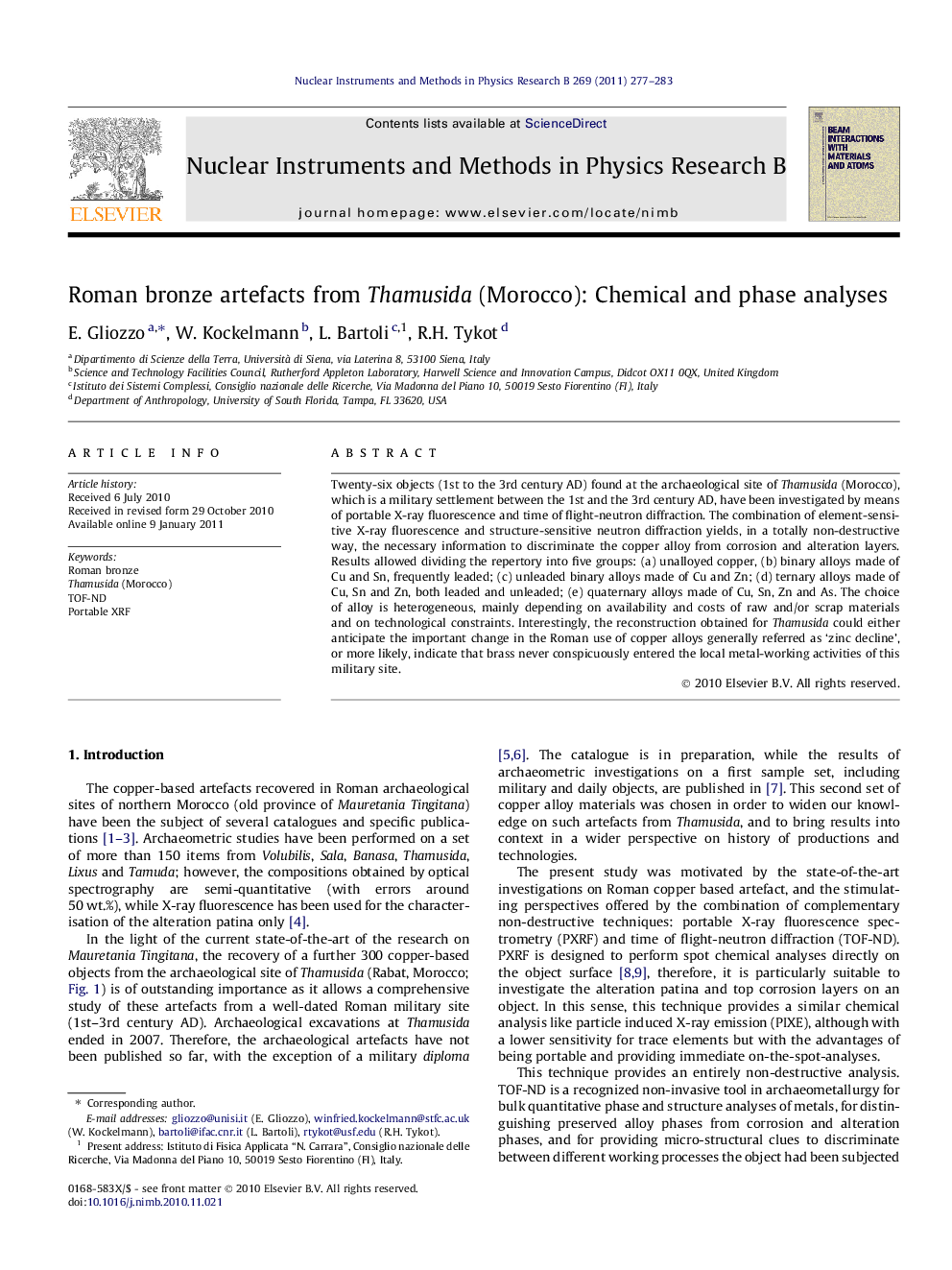| کد مقاله | کد نشریه | سال انتشار | مقاله انگلیسی | نسخه تمام متن |
|---|---|---|---|---|
| 1683342 | 1010502 | 2011 | 7 صفحه PDF | دانلود رایگان |

Twenty-six objects (1st to the 3rd century AD) found at the archaeological site of Thamusida (Morocco), which is a military settlement between the 1st and the 3rd century AD, have been investigated by means of portable X-ray fluorescence and time of flight-neutron diffraction. The combination of element-sensitive X-ray fluorescence and structure-sensitive neutron diffraction yields, in a totally non-destructive way, the necessary information to discriminate the copper alloy from corrosion and alteration layers. Results allowed dividing the repertory into five groups: (a) unalloyed copper, (b) binary alloys made of Cu and Sn, frequently leaded; (c) unleaded binary alloys made of Cu and Zn; (d) ternary alloys made of Cu, Sn and Zn, both leaded and unleaded; (e) quaternary alloys made of Cu, Sn, Zn and As. The choice of alloy is heterogeneous, mainly depending on availability and costs of raw and/or scrap materials and on technological constraints. Interestingly, the reconstruction obtained for Thamusida could either anticipate the important change in the Roman use of copper alloys generally referred as ‘zinc decline’, or more likely, indicate that brass never conspicuously entered the local metal-working activities of this military site.
Journal: Nuclear Instruments and Methods in Physics Research Section B: Beam Interactions with Materials and Atoms - Volume 269, Issue 3, 1 February 2011, Pages 277–283